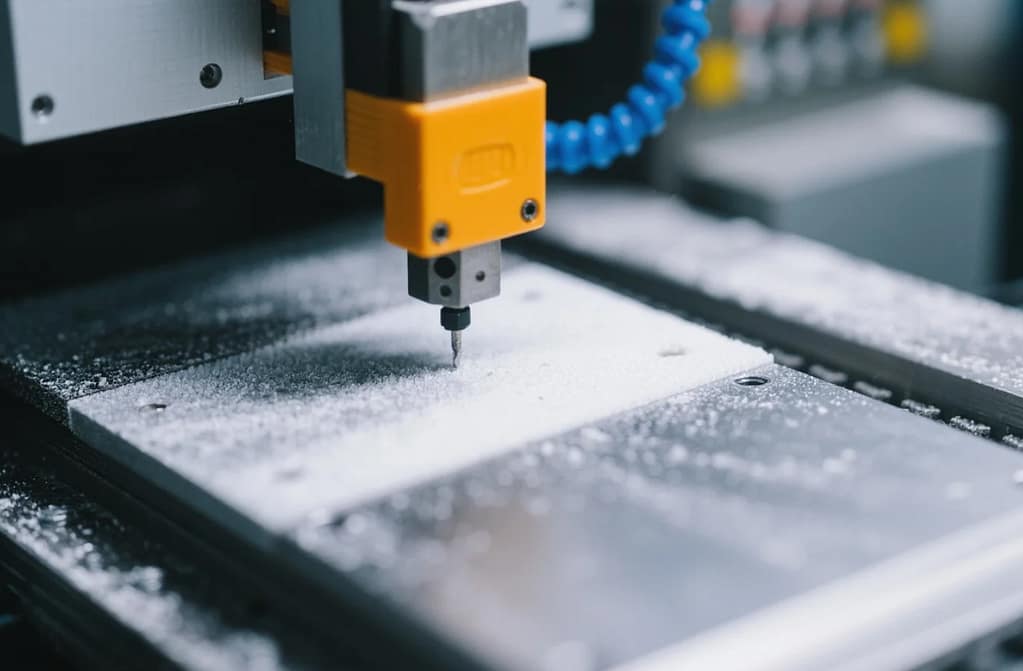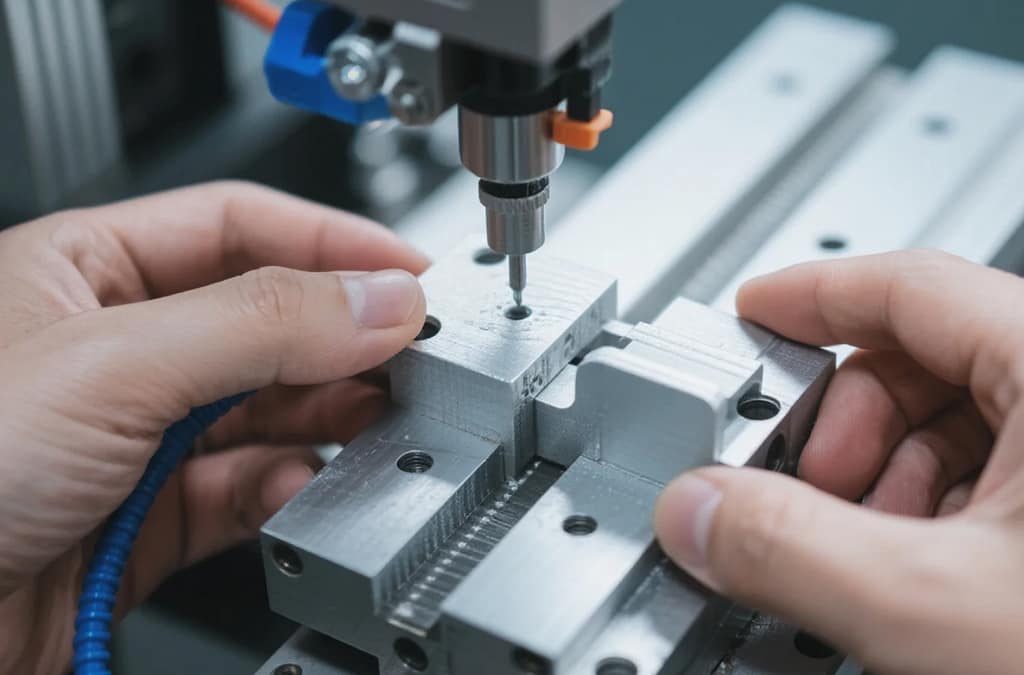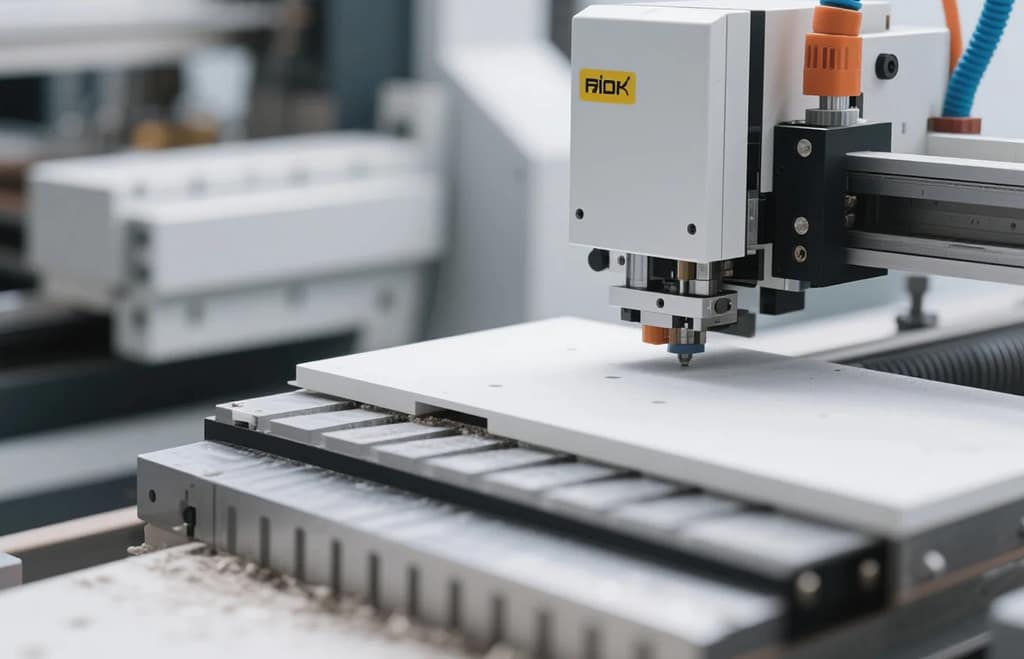In the dynamic world of modern fabrication, where the buzz of 3D printing often dominates the headlines, a foundational methodology quietly underpins the most critical sectors of industry: fabrico subtrativo. Far from being an outdated technique, this traditional, yet constantly evolving, process remains the undisputed standard for parts demanding the utmost in material integrity, dimensional accuracy, and surface finish. This article will provide a comprehensive, technical exploration of fabrico subtrativo, focusing on its enduring relevance and irreplaceable role for users of high-precision services across demanding fields like aerospace, medical devices, and defense.
At its core, fabrico subtrativo operates on the principle of removal. Unlike additive methods that build an object layer by layer, this process begins with a solid block or workpiece, from which material is systematically cut, drilled, milled, or ground away until the desired final geometry is achieved. The journey from a raw billet to a finished, functional component is a testament to controlled power and micron-level precision.
The Pillars of Subtractive Manufacturing: Techniques and Technologies

The versatility and longevity of fabrico subtrativo stem from the diverse range of techniques that fall under its umbrella. These methodologies, often automated and governed by Computer Numerical Control (CNC) systems, are what allow for the unparalleled fidelity required in high-stakes applications.
CNC Machining: The Precision Workhorse
The modern face of fabrico subtrativo is undoubtedly CNC machining. This process leverages digital Computer-Aided Design (CAD) models, translating them into executable machine instructions (G-code) that precisely dictate the movement of cutting tools relative to the workpiece.
- Milling: Using multi-point rotating cutting tools, milling machines remove material across one or more axes. Advanced multi-axis systems (up to 5-axis) allow for the creation of incredibly complex, contoured surfaces and features that would be impossible with simpler techniques, all while maintaining superior accuracy.
- Turning: In this process, the workpiece itself rotates, while a stationary, single-point cutting tool removes material to create cylindrical features, threads, and internal bores. This is the cornerstone for shafts, pins, and complex rotational components.
- Drilling and Boring: These operations create holes and enlarge existing ones, respectively. For precision services, the alignment, straightness, and tolerance of drilled features are critical for assemblies, often necessitating advanced fixturing and tool compensation.
Advanced Material Removal Processes
Beyond conventional machining, several non-traditional fabrico subtrativo methods are indispensable for working with specialized materials or intricate geometries:
- Electrical Discharge Machining (EDM): Using electrical sparks to erode material, EDM is perfect for achieving complex shapes, fine details, and ultra-high precision in hard, conductive metals. Its ability to machine hardened materials post-heat treatment prevents warping and maintains tight tolerances.
- Waterjet and Laser Cutting: These methods use high-pressure water or focused light beams to cut flat stock, offering rapid, cost-effective material separation with minimal physical stress on the material. They are frequently used for pre-processing blanks before final precision machining.
The Unmatched Advantages in Precision Manufacturing

For professional users seeking high-reliability components, the advantages of relying on fabrico subtrativo processes are compelling and distinct. These benefits directly address the non-negotiable requirements of mission-critical parts.
Superior Dimensional Accuracy and Tight Tolerances
This is where fabrico subtrativo truly shines. The rigid nature of the machinery, combined with precise tool control, allows for the achievement of dimensional tolerances often reaching $\pm0.005$ mm ($\pm0.0002$ inches) or better. These tight specifications are not merely desirable; they are essential for parts that must mate perfectly in an assembly—such as components in a hydraulic valve or the articulating joint of a surgical robot.
The precision offered by machining a solid, homogenous block inherently limits internal stresses and dimensional deviations that can plague other methods. When the success of an entire system depends on consistent, predictable component performance, the repeatability of the subtractive process is its greatest strength.
Material Integrity and Mechanical Performance
Components produced via fabrico subtrativo start with high-quality, often forged or extruded, bulk materials. This initial raw material typically possesses an optimal, uniform internal grain structure. By removing material, this established structural integrity is preserved, leading to final parts with superior mechanical properties:
- Higher Strength and Durability: Machined parts exhibit predictable strength under load because they inherit the strength of the solid raw material, free from the porosity or anisotropic properties that can occur in layered processes.
- Excellent Surface Finish: Machining directly creates surfaces of exceptional quality. A smooth, low surface roughness ($R_a$) is crucial in applications where friction, wear, or fluid dynamics are factors, such as in aerospace turbine blades or high-purity medical tubing connections. This often eliminates the need for extensive, costly post-processing steps.
Versatility Across the Material Spectrum
A major differentiator is the virtually limitless material compatibility of fabrico subtrativo. CNC systems can effectively process everything from common engineering plastics and non-ferrous metals to the most challenging high-performance alloys.
- Aerospace: High-strength titanium, Inconel, and various superalloys are routinely machined to create structural components, engine parts, and landing gear assemblies that must withstand extreme temperatures and forces.
- Medical: Biocompatible materials like PEEK, medical-grade stainless steel (316L), and specialized titanium alloys are processed for surgical implants and instruments, where sterilization compatibility and long-term functional reliability are vital.
Subtractive vs. Additive: A Strategic Choice

The conversation in modern manufacturing often centers on the dichotomy between additive (3D printing) and fabrico subtrativo. For the precision services user, the choice is not about one being better than the other, but about strategic application: aligning the process with the part’s functional requirements.
Additive methods excel at geometric complexity, internal lattices, and rapid, low-volume prototyping where mechanical performance is secondary. However, when a component requires known material strength, an exceptional surface finish, and tolerances essential for reliable fit and function, fabrico subtrativo is the clear and pragmatic choice. The two methods are increasingly being utilized in tandem—hybrid manufacturing—where a part is additively built for complexity and then precisely machined (subtracted) to achieve the necessary tight tolerances and fine surface finish.
The Importance of Ethical and Value-Driven Manufacturing
Choosing a manufacturing partner is about more than just technology; it is about shared values. A professional organization committed to fabrico subtrativo operates with a focus on responsible production. While the process inherently generates material chips, ethical manufacturers prioritize maximizing material utilization, minimizing waste, and ensuring chips are meticulously recycled back into the supply chain. Furthermore, the longevity and reliability of precisely machined components contribute to overall sustainability by reducing the frequency of part replacement and system failure.
In the hands of skilled engineers and operators utilizing state-of-the-art CNC equipment, fabrico subtrativo transforms raw material into the backbone of critical industries—a process built on the foundational values of consistency, reliability, and engineering excellence. It remains the only viable path for delivering components that truly define precision.
Frequently Asked Questions (FAQ)
Q1: Is Subtractive Manufacturing Cost-Effective for High Volume?
A: Absolutely. While the initial setup for programming a CNC machine can be higher than 3D printing, fabrico subtrativo systems, once tooled and validated, can run automatically for extended periods. This scalability makes it significantly more cost-effective for medium-to-large production volumes where consistency and material cost efficiency are paramount.
Q2: What is the Main Limitation of the Subtractive Process?
A: The primary limitation is geometric complexity, particularly the creation of internal, serpentine channels or complex hollow structures. The cutting tool must be able to reach all surfaces being machined. For designs requiring such features, hybrid manufacturing (additive for shape, subtractive for finish) or pure additive manufacturing may be more appropriate.
Q3: Why is Surface Finish Better with Machining than 3D Printing?
A: Subtractive manufacturing uses sharp cutting tools that physically shear material away, leaving a smooth, continuous surface. In contrast, 3D printing builds parts by fusing tiny layers or particles, which inherently creates a stepped or porous surface that often requires intensive post-processing (which itself is often a subtractive process like polishing or grinding) to achieve a comparable finish.
Q4: How is Material Waste Managed in Subtractive Manufacturing?
A: In professional settings, metal chips (swarf) generated by the subtractive process are collected, separated by material type, and sold back to refineries for recycling. While it involves removal, modern machining optimizes toolpaths to minimize the initial blank size, and the resulting chips become a valuable, recyclable resource.
Q5: What is the highest level of precision a CNC machine can achieve?
A: While standard CNC can achieve tolerances around $\pm0.025$ mm, ultra-precision machining, often referred to as diamond turning or high-speed machining, can achieve tolerances measured in the sub-micron range (less than $0.001$ mm). This is critical for optics, micro-electromechanical systems (MEMS), and other highly specialized components.